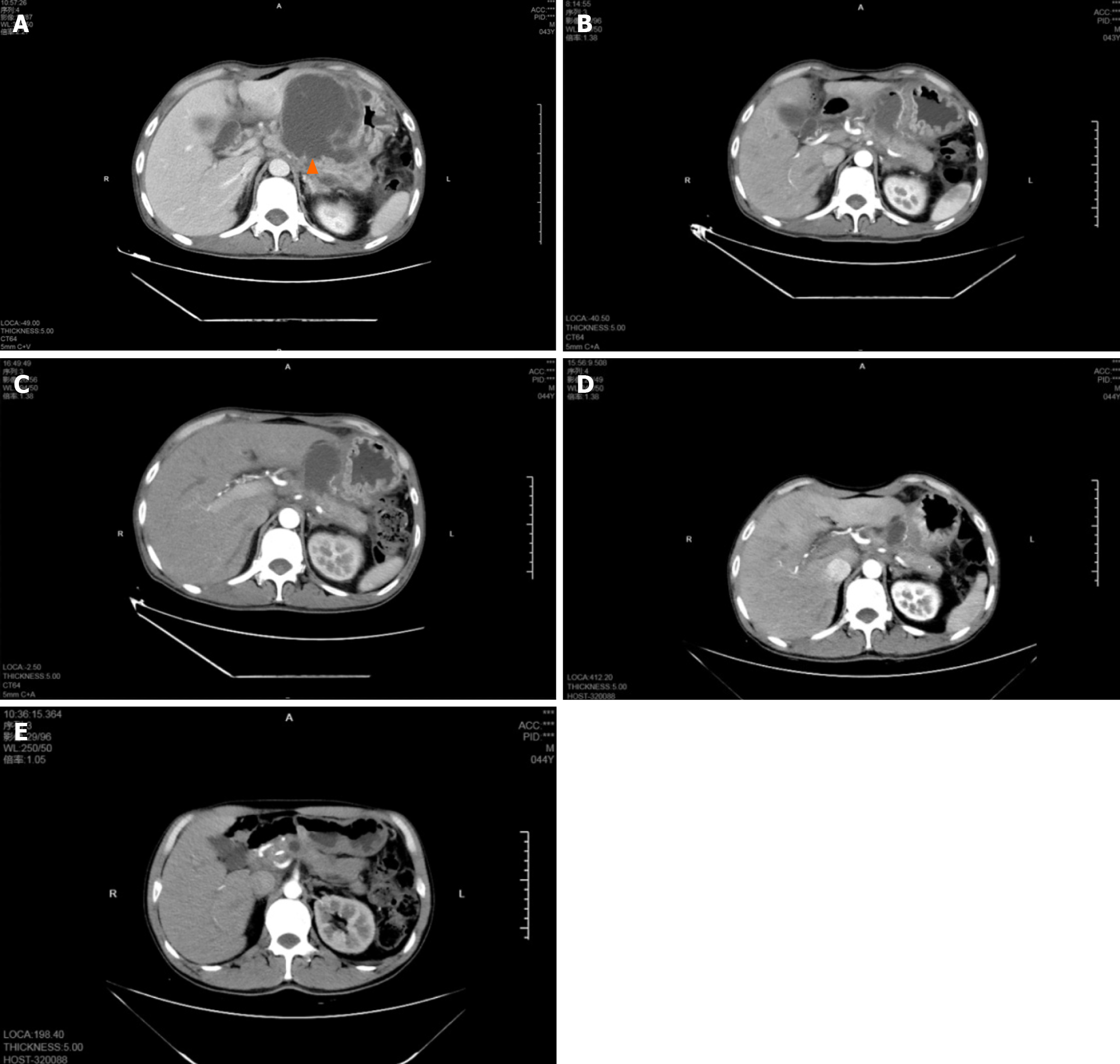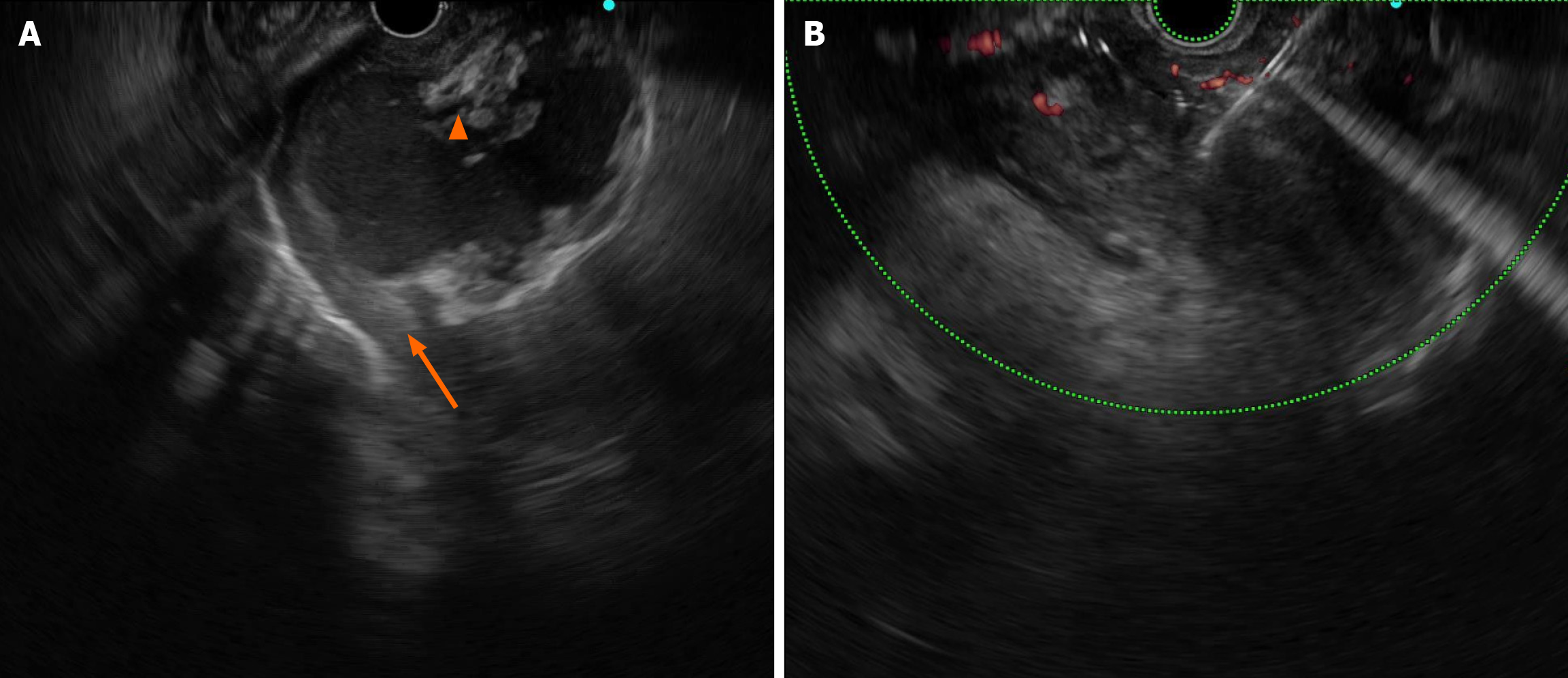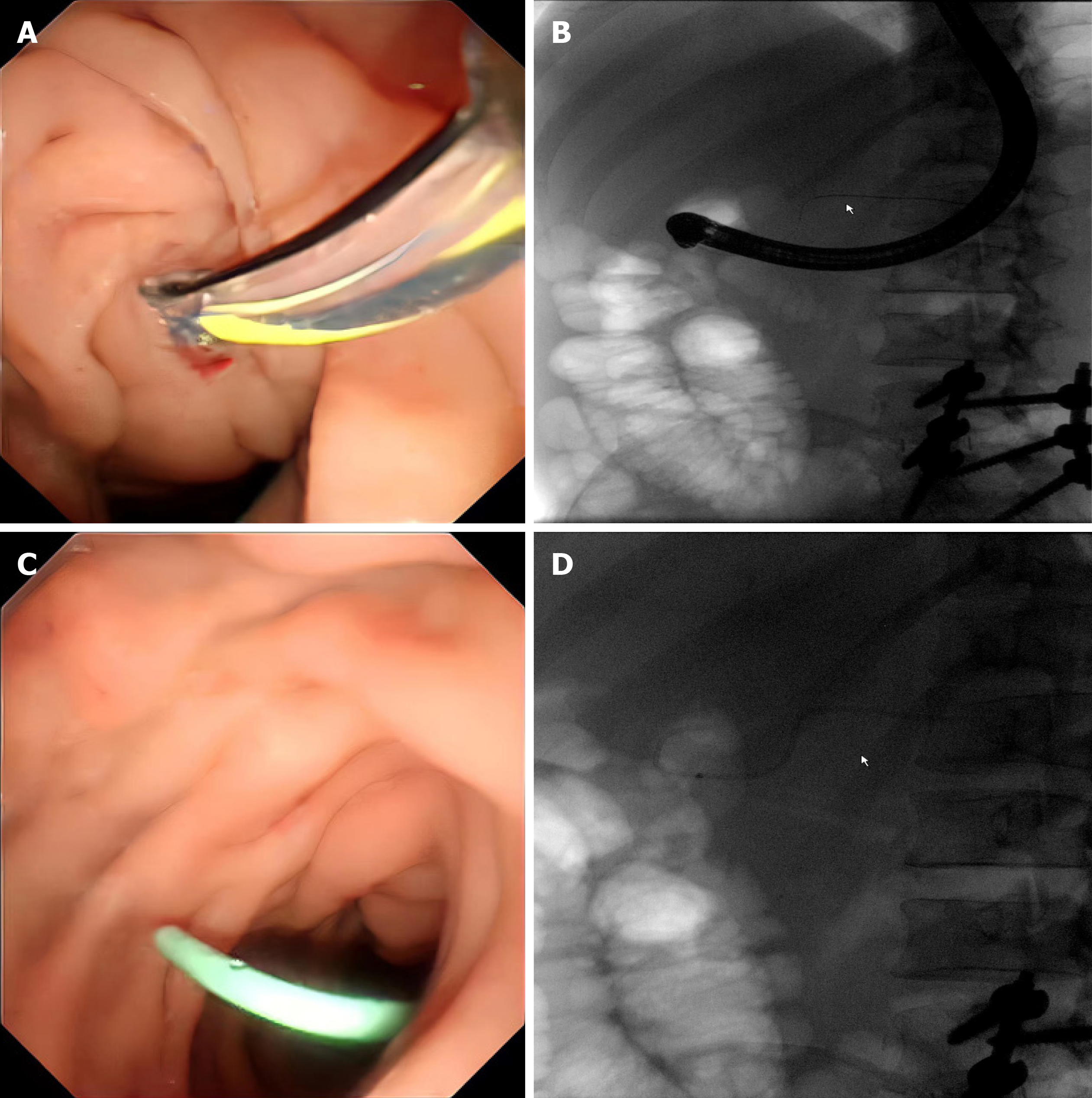Copyright
©The Author(s) 2024.
World J Gastrointest Surg. Feb 27, 2024; 16(2): 609-615
Published online Feb 27, 2024. doi: 10.4240/wjgs.v16.i2.609
Published online Feb 27, 2024. doi: 10.4240/wjgs.v16.i2.609
Figure 1 Contrast-enhanced computed tomography.
A: On February 13, 2023, multiple cysts were seen in the hepato-gastric space, low-attenuated, homogeneous fluid collections, with a maximum diameter of 89 mm × 76 mm, the cyst was communicates with the pancreatic duct (orange triangle); B: The cyst size was about 40 mm × 59 mm after 3 d of the first intervention; C: Two weeks later, computed tomography examination before the second intervention showed that the cyst size was similar to the last check; D: After 3 months of follow-up, the size of the cyst was about 27 mm × 22 mm; E: After 6 months of follow-up, the size of the cyst was about 6 mm × 8 mm.
Figure 2 Endoscopic ultrasound-guided aspiration and lavage.
A: The size of the cyst cavity was 56 mm × 36 mm, with necrotic debris (orange triangle), and the necrotic collection was not walled-off (orange arrows); B: The cystic cavity almost disappeared after intervention.
Figure 3 Endoscopic retrograde cholangiopancreatography pancreatic duct stent drainage.
A: The guidewire was inserted into the pancreatic duct through an incision knife; B: Iodophor angiography; C: A 5-7 Fr plastic pancreatic stent was placed in the main pancreatic duct under fluoroscopy; D: X-ray fluoroscopy stent was in a good position.
- Citation: Zhang HY, He CC. Early endoscopic management of an infected acute necrotic collection misdiagnosed as a pancreatic pseudocyst: A case report. World J Gastrointest Surg 2024; 16(2): 609-615
- URL: https://www.wjgnet.com/1948-9366/full/v16/i2/609.htm
- DOI: https://dx.doi.org/10.4240/wjgs.v16.i2.609















